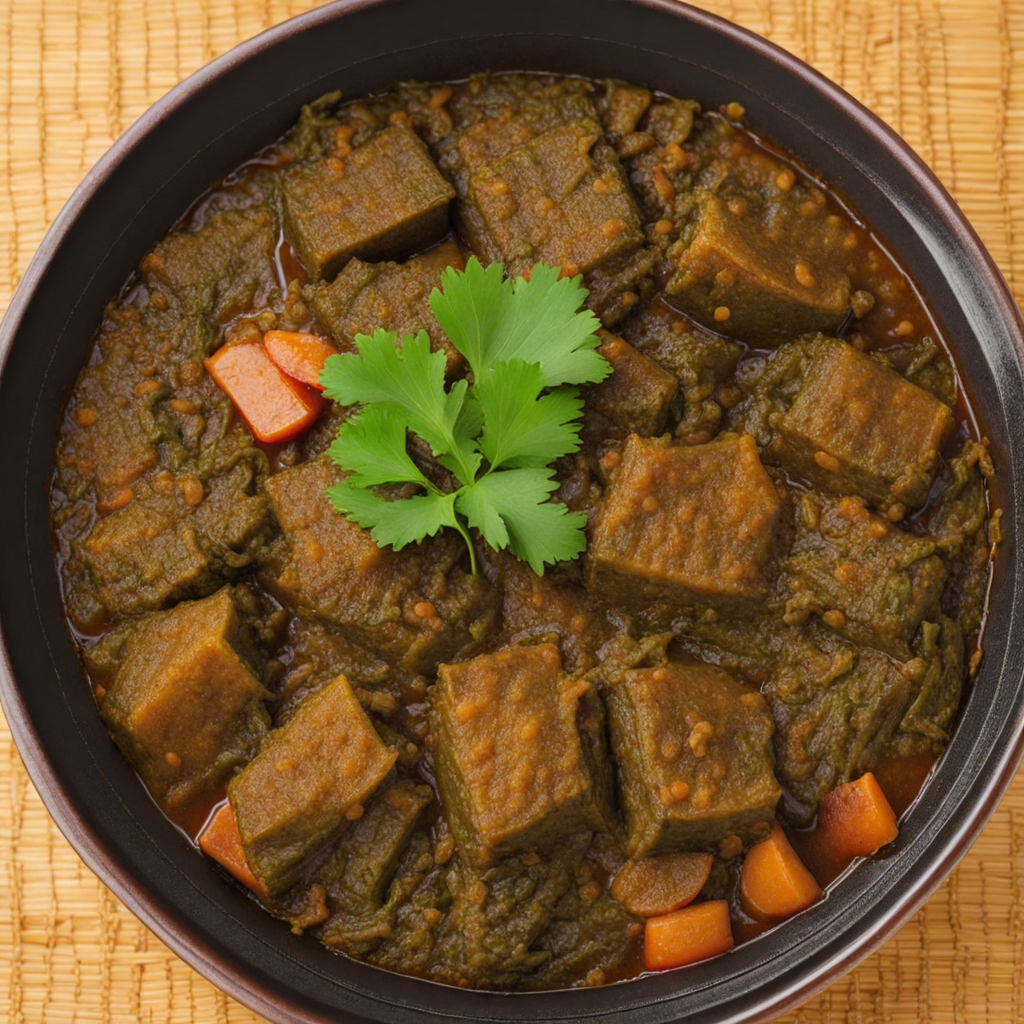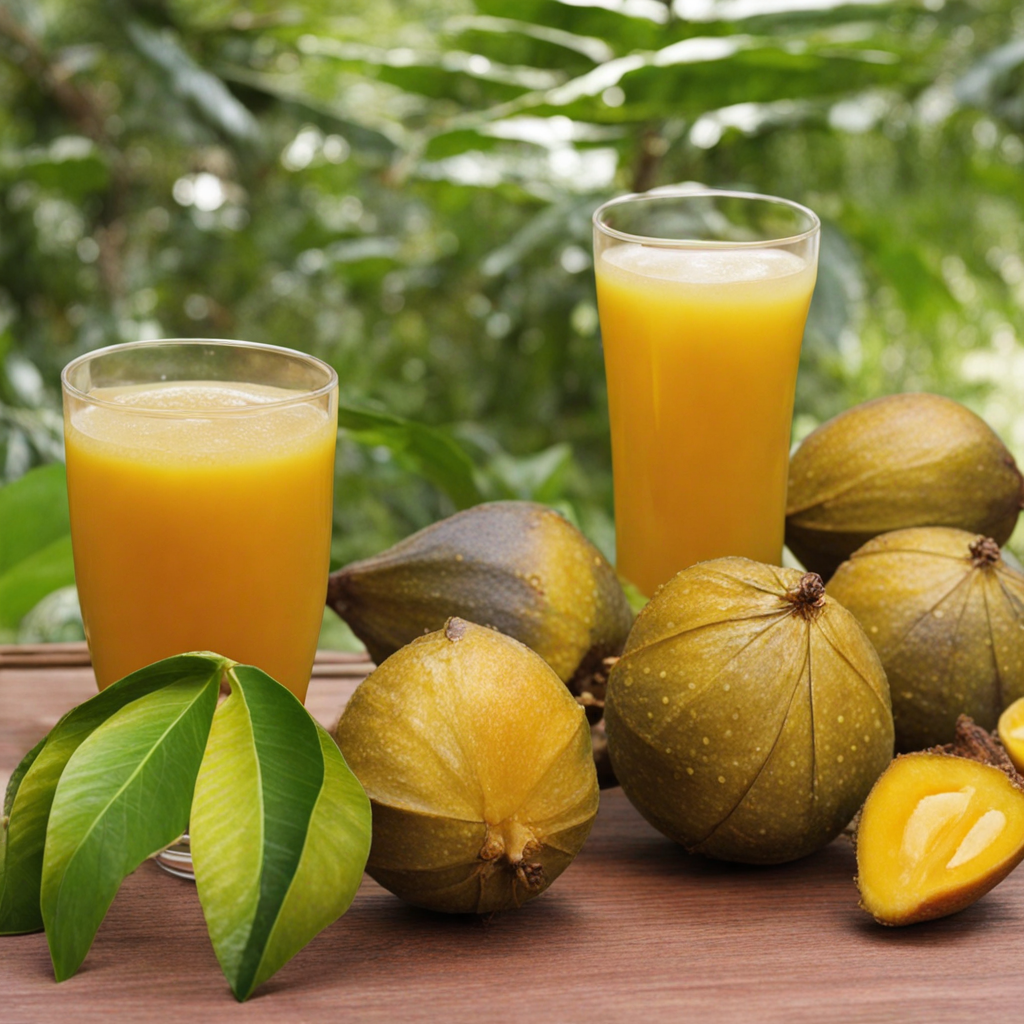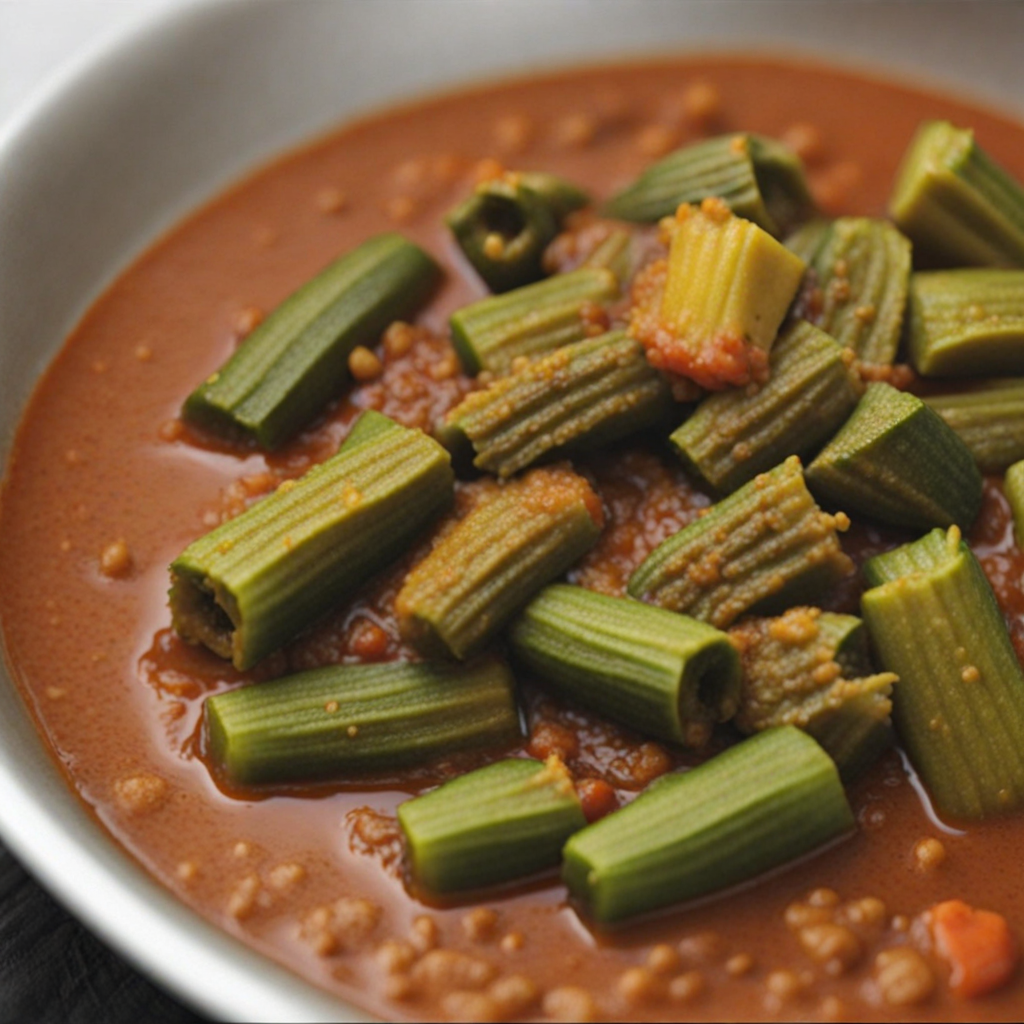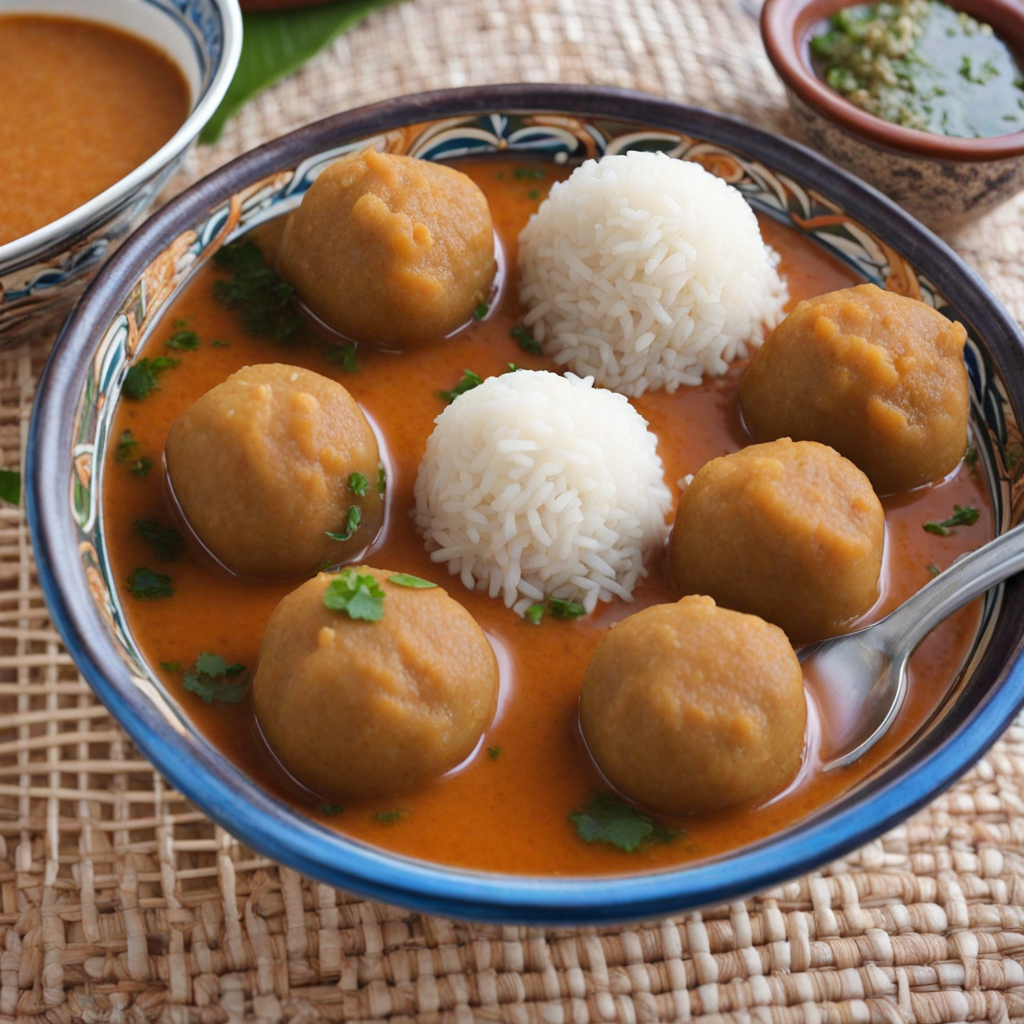Kontomire Stew
Kontomire Stew is a traditional Ghanaian dish that showcases the rich flavors and vibrant textures of West African cuisine. The primary ingredient, kontomire, refers to cocoyam leaves, which are known for their unique earthy flavor and tender texture. When cooked, these leaves take on a deep green hue and contribute a slight bitterness that is beautifully balanced by the other ingredients in the stew. The dish often features a base of rich palm oil, which adds a distinctive, robust flavor, while also lending a beautiful orange color to the stew, making it visually appealing as well. In addition to kontomire, the stew is typically enriched with a variety of ingredients such as tomatoes, onions, and spices that deepen the flavor profile. Some variations may include protein sources like smoked fish, chicken, or beef, which infuse the stew with savory notes and make it a hearty meal. The combination of these ingredients creates a comforting dish that is both nutritious and satisfying, often served alongside rice or a starchy side like fufu or boiled plantains that help soak up the delicious sauce. What sets Kontomire Stew apart is not only its unique taste but also the cultural significance it holds in Ghanaian cuisine. It is often prepared for special occasions and family gatherings, symbolizing togetherness and the joy of sharing food. Each household may have its own twist on the recipe, allowing for variations that reflect personal tastes and regional influences. As you embark on this culinary adventure, expect a delightful explosion of flavors that is both nourishing and deeply rooted in Ghanaian heritage.
How It Became This Dish
Kontomire: A Culinary Journey through Ghana’s History Kontomire, the popular Ghanaian dish made primarily from cocoyam leaves (known scientifically as *Colocasia esculenta*), is more than just a flavorful addition to the Ghanaian culinary landscape; it is a testament to the rich agricultural heritage, cultural practices, and historical narratives of the communities that embrace it. To understand kontomire, we must delve into its origins, cultural significance, and the evolution it has undergone through time. Origins of Kontomire The term “kontomire” refers specifically to the leaves of the cocoyam plant, which is indigenous to the tropics and subtropics of Southeast Asia, though it has become deeply ingrained in West African cuisine. The plant itself is believed to have been domesticated around 2000 BCE, with its spread facilitated by trade routes across the Mediterranean and into Africa. By the time it reached West Africa, cocoyam had adapted well to the region’s climate and soil, leading to its popular use in local dishes. Cocoyam leaves are an integral part of Ghanaian agriculture and diet, traditionally cultivated in smallholdings alongside other staples such as maize, cassava, and yams. The leaves are harvested and cooked, often in a stew or soup, to create a dish that is both nutritious and versatile. Kontomire is typically prepared with other ingredients such as groundnut paste (peanut butter), fish, meat, or garden eggs (African eggplants), further enriching its flavor profile and nutritional value. Cultural Significance In Ghana, food is not merely a means of sustenance; it is a cultural artifact that reflects the identity of its people. Kontomire is often served at communal gatherings, family celebrations, and during significant cultural events, symbolizing togetherness and the sharing of resources. The preparation of kontomire can be a communal affair, where family members gather to cook, share stories, and strengthen social bonds. The dish also holds a special place within traditional Ghanaian medicine. The leaves are known for their health benefits, rich in vitamins A, B, and C, fiber, and various minerals. In local herbal medicine, kontomire is believed to have anti-inflammatory and diuretic properties, making it a valuable addition to the diet of those seeking to maintain their health. The respect afforded to this leafy green speaks to the broader Ghanaian ethos of valuing natural ingredients and traditional knowledge. Furthermore, kontomire serves as a gateway to understanding the complexities of Ghanaian identity. It transcends ethnic boundaries, being embraced by various groups, including the Akan, Ewe, and Dagbani communities. Each ethnic group has its own way of preparing kontomire, incorporating local ingredients and cooking techniques, thus enriching the dish’s heritage and its significance as a unifying food across diverse cultures. Development through Time As Ghanaian society has evolved, so too has the preparation and presentation of kontomire. The dish has adapted to modern culinary practices while still retaining its traditional roots. In the pre-colonial era, kontomire was prepared with minimal cooking techniques, relying on the natural flavors of the cocoyam leaves and the local ingredients available. With the advent of colonialism and the introduction of new agricultural practices, kontomire began to incorporate a broader range of ingredients. The introduction of new spices and cooking methods, including the use of palm oil, enhanced the complexity of the dish. This blending of culinary traditions can be seen in the contemporary versions of kontomire, where recipes may vary significantly from one region to another or even from family to family. In modern Ghana, kontomire has found its way into both upscale restaurants and street food stalls, showcasing its versatility and appeal. Chefs have embraced innovative approaches to presenting the dish, from creative plating to fusion with international cuisines. This evolution reflects a growing appreciation for Ghanaian dishes on a global scale, allowing kontomire to gain recognition beyond its traditional context. The rise of the internet and social media has also played a role in the resurgence of interest in traditional Ghanaian foods, including kontomire. Young Ghanaians are increasingly sharing recipes, cooking tutorials, and cultural stories on platforms like Instagram and YouTube, contributing to a renewed pride in their culinary heritage. This digital renaissance has spurred a movement to keep traditional recipes alive while also encouraging experimentation and creativity in the kitchen. Conclusion Kontomire is more than just a dish; it is a reflection of Ghana’s agricultural history, cultural practices, and social dynamics. From its origins in the fertile soils of West Africa to its place on modern dining tables, kontomire embodies the resilience and adaptability of Ghanaian cuisine. It serves as a powerful reminder of the importance of food in fostering community ties, preserving cultural identity, and promoting health and well-being. As Ghana continues to evolve, so too will kontomire, adapting to new influences while remaining firmly rooted in its rich heritage. The dish will undoubtedly continue to play a significant role in communal gatherings, celebrations, and daily meals, serving as a delicious bridge between the past and the present. For those who partake in its enjoyment, kontomire is not just a meal but a celebration of life, culture, and the enduring spirit of the Ghanaian people.
You may like
Discover local flavors from Ghana







